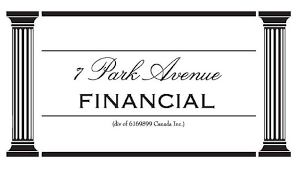|
Inventory Loans : Financing Inventory Assets
Inventory Finance Solutions Required? Here They Are!
YOUR COMPANY IS LOOKING FOR CANADIAN INVENTORY LOANS
AND FINANCING INVENTORY ASSETS!
UPDATED - 07/O1/205
You've arrived at the right address! Welcome to 7 Park Avenue Financial
Financing & Cash flow are the biggest issues facing business today
ARE YOU UNAWARE OR DISSATISFIED WITH YOUR CURRENT BUSINESS FINANCING OPTIONS?
CONTACT US
CALL NOW - DIRECT LINE - 416 319 5769 - Let's talk or arrange a meeting to discuss your needs
Email: sprokop@7parkavenuefinancial.com

Inventory Loan Financing and Working Capital
Understanding Inventory as a Critical Business Asset
Inventory loans or the financing of your inventory as a component of working capital are critical to the success of your business if your firm has a strong inventory component in working capital.
Inventory is considered one of the key business assets, and using business assets as collateral for financing is generally preferable to risking personal assets.
Inventory is one of the two components of working capital – the other is, of course, receivables. More often than not, the receivable asset is typically larger on a monthly basis than the inventory assets – but some firms, based on the nature of what they do, have a very heavy investment in inventory.
The Cash Conversion Cycle Challenge
Inventory converts into receivables (accounts receivable), which convert into cash. We all know that. The crux of the matter, though, is the time in which this happens.
Your ability as a manufacturer, wholesaler, etc., to purchase inventory, rework it, bill your customer, and then (unfortunately) wait for your account receivable to get paid can, in many cases, take 2-3 months.
Financial analysts call this whole process the cash conversion cycle – the only way you can slow that cycle down and improve cash flow is, unfortunately, to delay payments to suppliers as long as you can. That’s not a desirable operating strategy.
How Inventory Financing Works
Inventory financing works by providing businesses with access to capital through two main types: inventory loans and lines of credit.
Inventory loans offer a lump-sum amount secured by inventory, while a business line of credit is a type of revolving line that allows businesses to withdraw and repay funds multiple times as needed.
With a revolving line, interest is only charged on the amount used, and funds can be reused during the draw period, making it ideal for managing seasonal fluctuations and maintaining inventory levels.
Inventory financing and inventory loans work best when they are often within the context of a true asset-based lending arrangement for a combination of inventory and receivables.
However, the bottom line is, as we have stated, financing in this critical area of business financing is available. It’s specialized, but when properly put in place, it can significantly grow sales and profits.
Types of Inventory Financing
Inventory financing is not a one-size-fits-all solution—there are several types designed to address the diverse needs of businesses.
The most straightforward option is an inventory loan, a short-term loan that allows businesses to purchase inventory, using the inventory itself as collateral.
This type of financing is ideal for companies looking to quickly stock up for peak seasons or meet sudden increases in customer demand.
Another popular option is a line of credit, which provides business owners with flexible, revolving access to funds that can be used for purchasing inventory, paying suppliers, or covering other operational expenses.
This flexibility helps businesses maintain optimal inventory levels without tying up cash. Asset-based financing is another approach, where businesses leverage their existing inventory as collateral to secure a loan or line of credit.
This method is particularly useful for companies with significant inventory on hand, enabling them to unlock working capital without selling off assets. By understanding these different inventory financing options, businesses can select the most suitable method to manage inventory purchases, maintain healthy cash flow, and support ongoing growth.
Business Loans and Interest Rates
When considering inventory financing, it’s crucial for business owners to pay close attention to the interest rates and terms associated with business loans. Inventory financing loans can come with interest rates ranging from 8% to 15%, depending on factors such as the lender, the loan amount, and the business’s credit profile.
Reviewing the full terms—including repayment schedules, fees, and any penalties—ensures that the financing remains cost effective and aligns with the company’s cash flow needs.
Working with reputable inventory financing lenders who offer transparent terms and flexible repayment options can help businesses manage their loan obligations while maintaining enough cash to fund day-to-day operations and future growth.
By understanding the true cost of financing, business owners can make informed decisions that support their inventory strategy and overall financial health.
The Canadian Solution: Specialized Inventory Financing
So is there a solution? There is, of course, and in Canada it is a highly specialized solution involving the financing of inventory as a key driver to improve your cash flow and working capital.
If done properly, you do not incur extra term debt – the reality is that all you are doing is “monetizing” inventory to generate additional cash flow and working capital for your growth and profits.
Platforms like Loans Canada can help businesses find specialized inventory financing solutions tailored to their needs.
Key Challenges in Accessing Inventory Financing
One or two critical challenges continually obstruct our clients’ ability to properly monetize their working capital.
Many lenders are cautious about approving inventory financing due to the risks involved, especially for newer businesses that are still establishing themselves and may have limited credit access or higher financial risks.
Lenders typically conduct a thorough diligence process, which includes inventory appraisal, review of inventory management systems, and sometimes a field audit to verify the safety and condition of the inventory.
A business's credit history, including any instances of bad credit, can significantly impact approval odds for inventory financing. Newer businesses may face additional scrutiny and challenges in securing inventory financing compared to more established companies.
Let’s examine some of those challenges and determine how they can be overcome.
Traditional Banking Limitations
The first challenge is simply that it is becoming increasingly difficult to obtain inventory financing from traditional sources such as the Canadian chartered banks.
In fairness to our friends at the banks, it simply is difficult for them to properly value, monitor, and understand each company’s different inventory financing needs and the cash cycle around that inventory that we have discussed.
One further technical issue arises here, which is simply that if your firm has an operating lender in place, that lender has probably, sometimes unknown to yourself, taken security on the inventory as a part of their security agreement.
That’s not optimal – your inventory is collateralized, but you don’t receive any funding or margining against it. Importantly, inventory financing typically does not require business owners to risk their personal assets, such as homes or cars, since the inventory itself serves as collateral and protects personal assets from being at risk.
We meet with many clients who are in this position and need to work with them to unravel their current financing to properly allow for the monetization of their inventory via an inventory loan or margining facility.
In some cases, considering a business line of credit as an alternative financing option can provide more flexible access to funds for ongoing inventory needs.
Working with Specialized Inventory Financing Advisors
Inventory financing in Canada is specialized – as we’ve noted. We strongly recommend you seek and work with a trusted, credible, and experienced advisor such as 7 Park Avenue Financial.
What are the benefits of such a relationship?
First of all, your inventory will be properly “understood” and valued, allowing you to borrow against its value accordingly. Lenders will assess your existing stock to determine its suitability and condition as collateral.
Inventory loan providers specialize in evaluating and financing inventory assets, often focusing on your business’s credit history rather than personal credit scores.
It is an unwritten but generally acceptable rule that most banks lend approximately 40% against inventory assets.
Two points here –
if you can get bank financing on inventory and get that 40% advance, we would pretty well recommend you take it; however, if that becomes insurmountable, as it does for most clients, you actually can get anywhere from 40-75% from a true inventory financier.
Under inventory acts, lenders have a legal framework that allows them to seize and sell inventory if the borrower defaults, making inventory a viable form of collateral.
Requirements for Inventory Financing
Are there any special requirements to get proper inventory financing?
In general, no – a standard business financing application applies, and the company must be able to demonstrate, preferably via a perpetual inventory system, that the company's inventory can be accurately tracked and reported, often through the balance sheet, usually on a monthly, but perhaps on a weekly basis.
Lenders may review how quickly inventory is sold to assess liquidity, so maintaining accurate records is essential. Having enough inventory is a key requirement for securing financing, as it ensures the company can meet customer demand.
Additionally, the ability to sell inventory is crucial for repaying loans and maintaining financial stability.
Case Study
Case Study: Northern Outdoor Gear's Seasonal Success
Northern Outdoor Gear, a Canadian outdoor equipment retailer, faced a common challenge: they needed to purchase winter inventory in summer when cash flow was tight from spring clearance sales. Traditional bank loans required extensive documentation and took too long for their seasonal timeline.
Through inventory loan financing, Northern Outdoor Gear secured $150,000 against their existing spring inventory while purchasing winter stock. The 60-day approval process was reduced to 8 days, allowing them to secure early-season pricing from suppliers.
Results: The company increased winter season revenue by 35%, improved supplier relationships through prompt payments, and maintained healthy cash flow throughout their transition period. The inventory loan was fully repaid through winter sales, and they've used this financing strategy for three consecutive years.
Conclusion: Strategic Considerations
If your business relies heavily on inventory as a key component for sales and profit growth, consider the structuring of a proper inventory financing arrangment either separately or within the context of a true asset-based lending or working capital facility.
Inventory finance is a strategic way to finance inventory purchases, whether through a short term business loan, term loans, or short term loans.
Retail businesses, small businesses, and small business owners can benefit from these financing options to buy inventory, acquire additional inventory, or purchase more stock, especially to meet customer demand during peak seasons.
Financing inventory purchases can provide cash upfront, a lump sum, or a revolving line of credit, depending on the product chosen.
Funds from a business loan or small business loan are typically deposited into a bank account for operational use.
When considering finance options, it is important to understand all costs involved, including the interest rate, higher interest rates, and any associated fees. Using external financing means businesses do not have to rely solely on their own sources of capital, allowing for greater flexibility and growth opportunities.
Call 7 Park Avenue Financial, a trusted, credible and experienced Canadian business financing advisor.
FAQ
What types of businesses qualify for inventory loan financing?
Inventory loan financing works best for businesses with tangible, sellable inventory including retailers, wholesalers, manufacturers, and distributors. Industries like automotive parts, electronics, fashion, home goods, and seasonal merchandise typically see excellent results with this financing option.
How much can I borrow against my inventory value?
Inventory loan amounts typically range from 50-80% of your inventory's wholesale or cost value, depending on the type of products, turnover rates, and market demand. Highly liquid inventory like electronics or automotive parts often qualify for higher percentages than specialized or seasonal items.
Citations / More Information
- Canadian Federation of Independent Business. "Small Business Financing Report 2024." CFIB.ca
- Business Development Bank of Canada. "Alternative Financing Solutions for SMEs." BDC.ca
- Statistics Canada. "Business Credit Conditions Survey." StatCan.gc.ca
- Association of Asset-Based Lenders. "Canadian Market Analysis 2024." AABL.org
- Export Development Canada. "Trade Finance Trends Report." EDC.ca
- 7 Park Avenue Financial."Inventory Financing Companies In Canada". https://www.7parkavenuefinancial.com/inventory_finance_companies.html

' Canadian Business Financing With The Intelligent Use Of Experience '
STAN PROKOP
7 Park Avenue Financial/Copyright/2025

ABOUT THE AUTHOR: Stan Prokop is the founder of 7 Park Avenue Financial and a recognized expert on Canadian Business Financing. Since 2004 Stan has helped hundreds of small, medium and large organizations achieve the financing they need to survive and grow. He has decades of credit and lending experience working for firms such as Hewlett Packard / Cable & Wireless / Ashland Oil
|